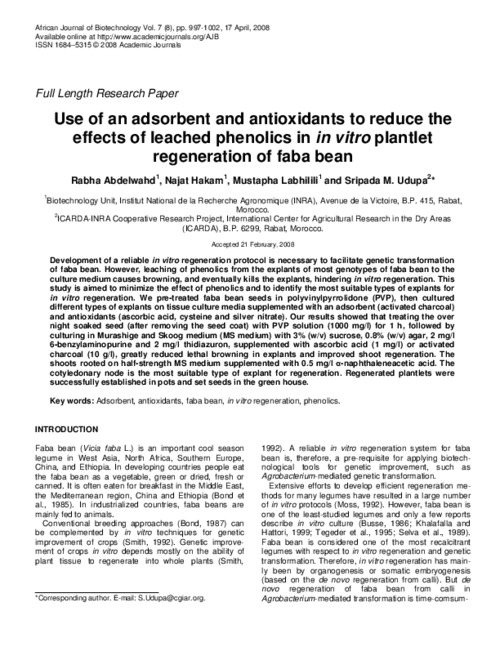Use of an adsorbent and antioxidants to reduce the effects of leached phenolics in in vitro plantlet regeneration of faba bean
Abstract
Development of a reliable in vitro regeneration protocol is necessary to facilitate genetic transformation of faba bean. However, leaching of phenolics from the explants of most genotypes of faba bean to the culture medium causes browning, and eventually kills the explants, hindering in vitro regeneration. This study is aimed to minimize the effect of phenolics and to identify the most suitable types of explants for in vitro regeneration. We pre-treated faba bean seeds in polyvinylpyrrolidone (PVP), then cultured different types of explants on tissue culture media supplemented with an adsorbent (activated charcoal) and antioxidants (ascorbic acid, cysteine and silver nitrate). Our results showed that treating the over night soaked seed (after removing the seed coat) with PVP solution (1000 mg/l) for 1 h, followed by culturing in Murashige and Skoog medium (MS medium) with 3% (w/v) sucrose, 0.8% (w/v) agar, 2 mg/l 6-benzylaminopurine and 2 mg/l thidiazuron, supplemented with ascorbic acid (1 mg/l) or activated charcoal (10 g/l), greatly reduced lethal browning in explants and improved shoot regeneration. The shoots rooted on half-strength MS medium supplemented with 0.5 mg/l -naphthaleneacetic acid. The cotyledonary node is the most suitable type of explant for regeneration. Regenerated plantlets were successfully established in pots and set seeds in the green house

